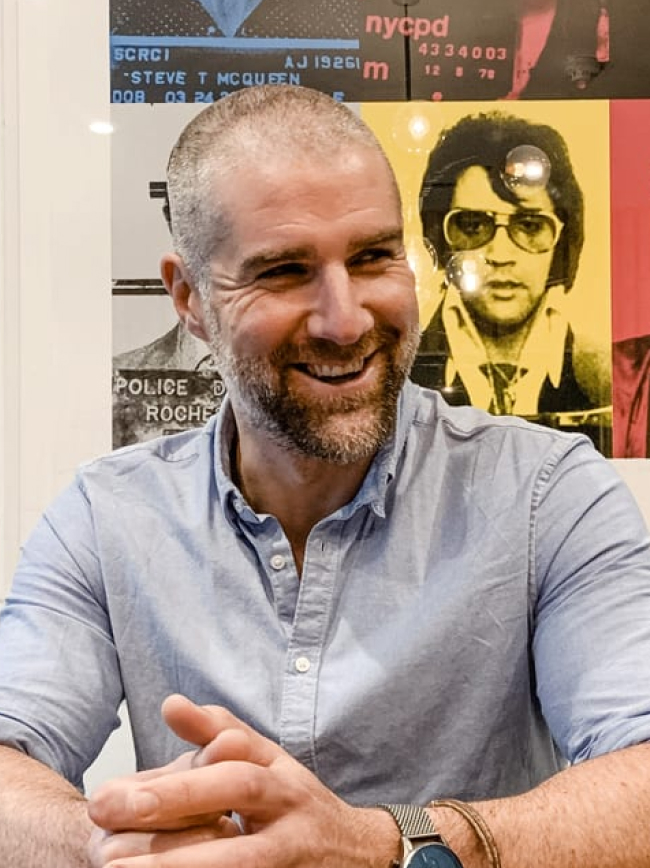Busting the 95-5 myth and B2B marketing ‘rules’

A piece of research from 2021 has since become one of the most quoted and referenced stats in the world of B2B marketing:
“95% of clients are not in the market for many goods or services at any one time”
The premise is that brand-building and memorable advertising are fundamental to B2B marketing, and more bottom-of-funnel activities risk falling into the ‘spray and pray’ bucket.
Certainly a laudable and thought-provoking concept. But it’s felt a little too repeated in every circumstance for my liking. I’ll be honest and admit that it sits in many of our proposals and pitches as a reminder of the need for full-funnel campaigns.
It’s often referenced as a doctrine, a science, or, worst of all, as an actual formula for deciding budgets, which it very much is not. Let me explain…
95% you say?
Sure, like one is twenty. Or perhaps not:
“The 95% figure is not meant to be a precise rule. We’re using it as a heuristic to get the idea across that the vast majority of businesses, for a large proportion of products, are not in the market in particular time periods”
– Professor John Dawes
The figure is purely illustrative of a broad point. However, there’s no science to it, it’s a finger in the air guesstimate. It’s also misleadingly labelled and presented as research, when it would not hold up to even the flimsiest review process: where’s the data? What’s the sample size?
It’s not a rule
A rule is not the same as a law. A rule is a statement that describes the way that things usually happen in a particular situation. But a rule still has to be based on observations and trends and have some basis to fulfil the ‘usually happens’ part.
This may be pedantry of the highest order – and I must repeat that I do actually believe the foundations of the thinking to be broadly correct – but the number is neither 95% nor is it a rule.
One size does not fit all
B2B ‘rules’ are often dangerous generalisations. As a case in point, we’re seeing the 95/5 stat in marketing strategy decks of several B2B businesses. It’s touted as a foundational data insight, not a heuristic concept, whether or not it applies at all to the organisation’s own niche or customer buying cycle.
The wealth of opinion and thinking on the industry is actually forged from a small but powerful niche.
“Has your business recently made a significant purchase like a new phone system, engaged with a new payroll software vendor, signed a contract with a Salesforce IT support company…Corporations change service providers such as their principal bank or law firm around once every five years on average.”
This quote, taken from the research, shows how the B2B world is inherently viewed as ‘large corporations buying large things with big procurement cycles and contracts tying relationships down’.
In this context, the 1 in 20 assumption naturally makes sense. Kind of. Except it’s not the B2B world I see and work in every day.
There’s a small short-term subscription pieces of SaaS software for every 12-month IT support contract. For every retained Magic Circle employment lawyer, there’s also a small specialist business offering consultations on employee happiness.
Even in the large enterprise example, the whole thing falls apart when you speak to the audience – the same buyers don’t go ‘out of market’ once they’ve signed a big deal. There are many other aspects that are very much ‘in market’ – problems they’re actively looking to solve, which could easily be poached by a competitor or vendor who’s just ‘taken the buyer out of market’.
B2B is not one homogeneous sector. B2B businesses operate in all shapes and sizes, offering all kinds of products and services that have a multitude of buyer behaviours.
The reality is that there is no rule or model that can make sense of any of this. Every business is different, the buyers in every category are different, and buying cycles and content consumption habits vary wildly.
The LinkedIn Institute’s data bias is typical of a broader ‘thought leadership bias’, as it is nearly always researched and penned by those working for or within the IT/software 5-year buying cycle world.
Basically, people with a large enterprise background don’t see or understand the much broader universe of B2B buyers, many of whom are actually in the small business side of the market.
The times they are a-changin’
B2B services and buyers have changed too much in the last two years for this kind of B2B to continue being held up as the model by which all other B2B is done:
- The internet changed how buyers research.
- Social media changed how buyers see companies and has blurred the lines between paid, owned and earned.
- Covid changed how we work and the speed at which businesses adapt.
- Innovation and rapid technological change mean businesses recognise long contracts are a risk.
While also making category creation and demand gen a significant factor for the innovators.
The SaaS-ification of tech, the opening up of the banking sector, the atomisation of agencies and consultancies – it all means business is more agile and fast-moving than ever before.
So what’s a business to do?
“How can I calculate how many buyers are in my market at one time?”
The research openly acknowledges the broad assumption of the 95% figure and the need to work out a comparable figure for your own industry. But no-one’s really doing this, and it still leaves the very open-ended question of what to do with that information.
Should 80% of the budget be spent on display ads and 20% on lead gen, or should 76% be spent on events and top-of-funnel thought leadership?
The only way to get it right is through research and learning. Build your own, better version of the 95-5 statistic based on your own historical data.
Get closer to sales teams, who have extensive insight into what customers and prospects are actually saying.
Above all, understand your buyers. Understand their pain points and needs. Go and meet customers (yes, IRL) and learn about their world. It will fundamentally change both your strategy and tactics.
And keep trying and learning from what you do.
• • •
(Photo by Daniels Joffe on Unsplash)

